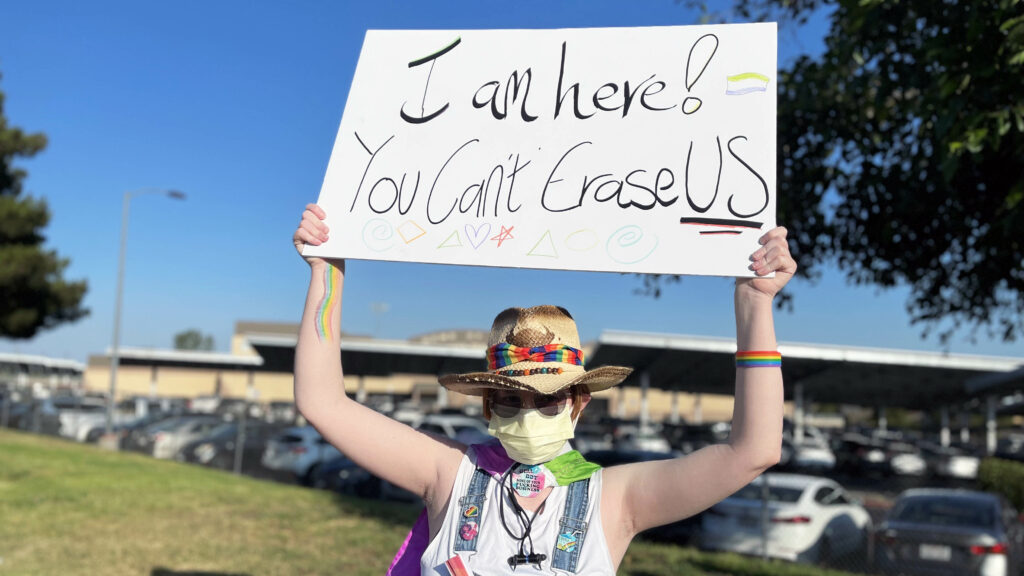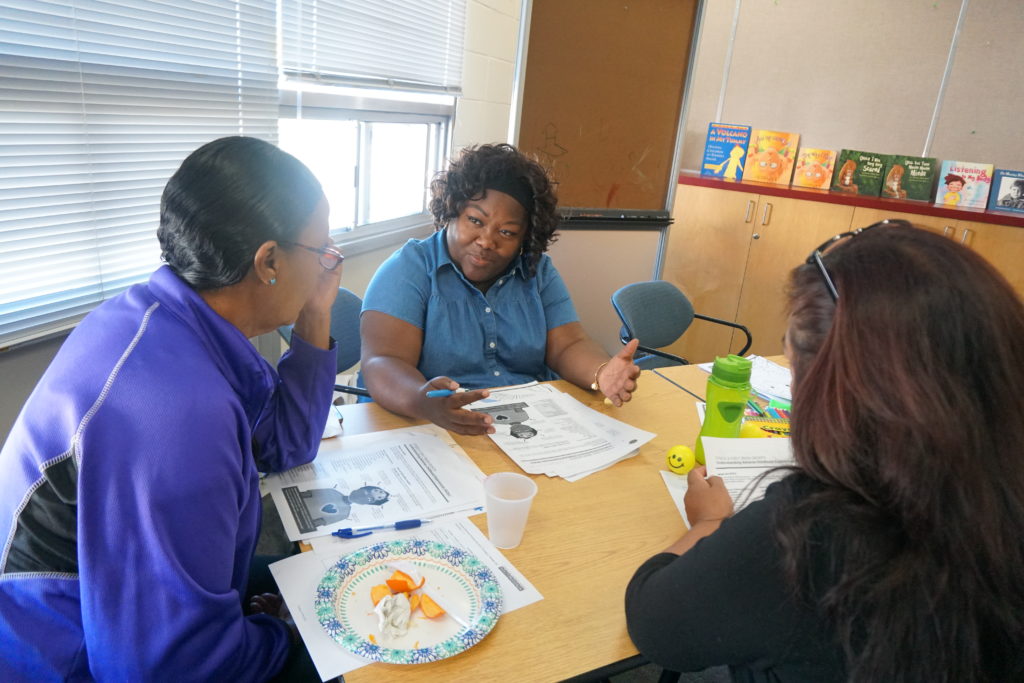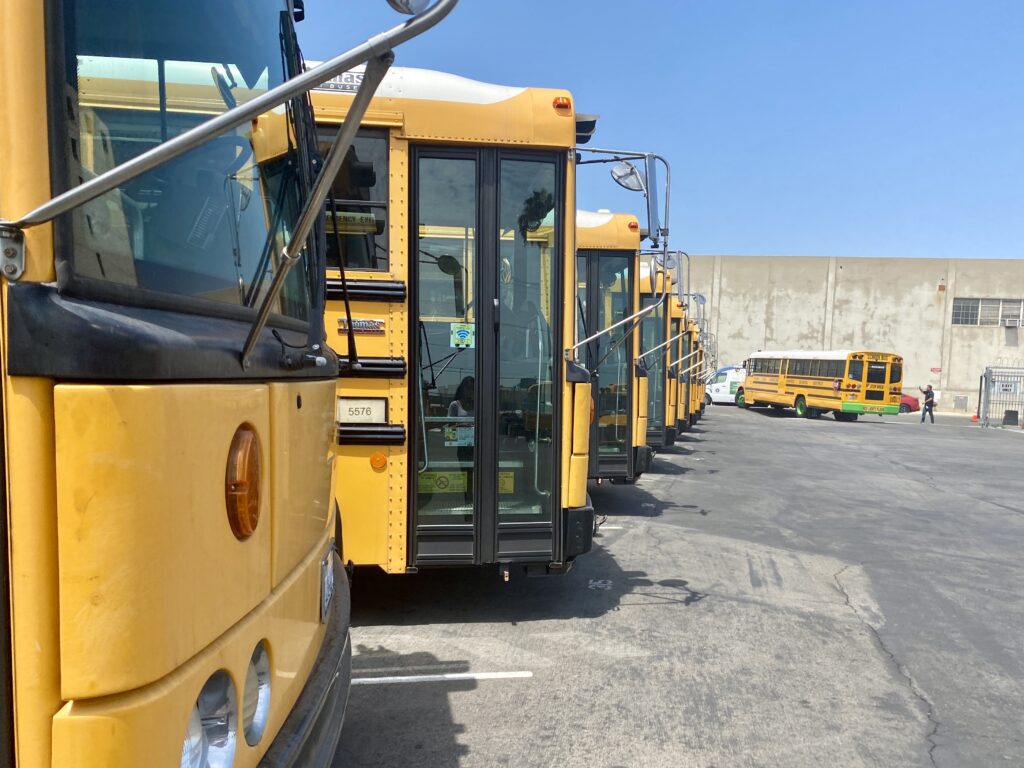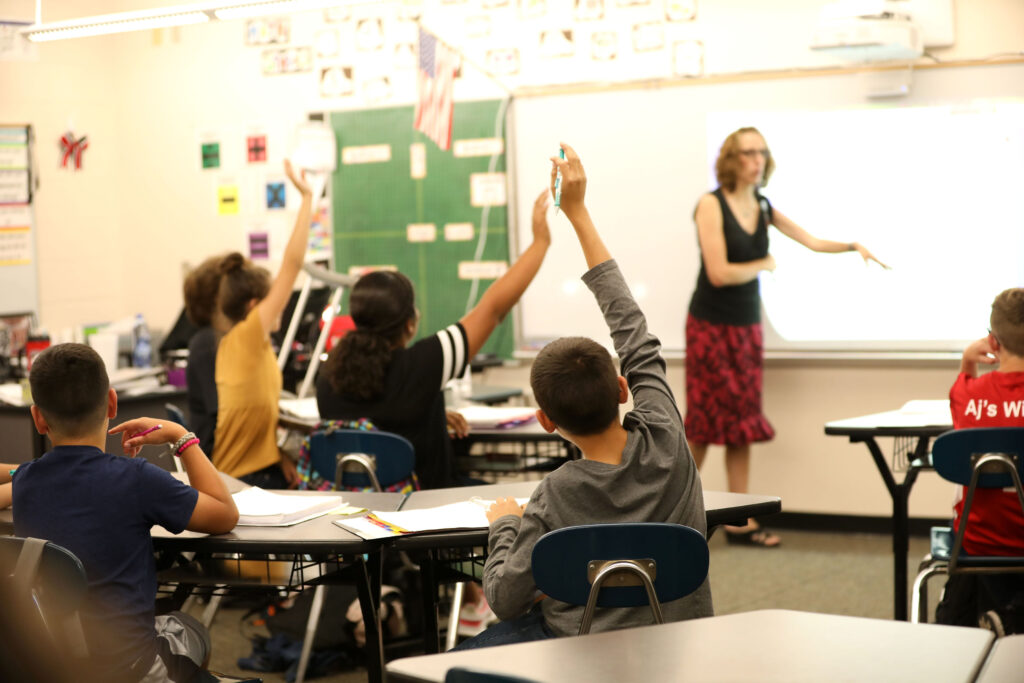Top Takeaways
- Growing numbers of California students reported feeling hopeless in the wake of the pandemic, with 42% of juniors reporting chronic sadness in a 2019-21 state survey.
- California has made substantial investments in its mental health infrastructure, including the $4 billion Children and Youth Behavioral Health Initiative.
- School mental health professionals say they feel more valued as essential partners in education.
When schools shuttered five years ago, many students like Benjamin Olaniyi turned to their phones to find connection during a profoundly unsettling and isolating time.
“Social media made us feel more connected with the world,” said Olaniyi, who is now a junior at King/Drew Medical Magnet High School in Los Angeles.

The pandemic struck in the spring of his sixth grade year, causing him to miss a school camping trip he had looked forward to. He remembers a sense of unity online in those early days amid the uncertainty and fear.
People were afraid of an unknown disease, profound isolation, economic instability and grief for family members killed by the virus.
Young people logged on to share how they felt about what they were facing in real time: the loneliness, the hopelessness and the fear that they could lose family or friends to the strange illness.
This exposure to frank discussion of mental health on social media “probably made us more aware of mental health struggles that previous generations wouldn’t have been exposed to,” Olaniyi said.
The early years of the pandemic turned out to be a key moment when the conversation about students’ mental health and wellness went mainstream. And it wasn’t just students who took note that their peers were struggling with depression, anxiety and other mental health challenges in the wake of the Covid-19 pandemic.
This showed up in the pandemic era of the California Healthy Kids Survey, where more students reported that they experienced hopelessness. In data collected in 2019-21, 42% of 11th grade students reported chronic sadness, up from 32% just four years earlier.
Dr. Ijeoma Ijeaku, president of the California Academy of Child and Adolescent Psychiatry, said that the pandemic lifted a veil on a worsening crisis among young people.
“It has forced us to look at our mental health in a way we had never looked at it before,” Ijeaku said.
She credits Gen Z, in particular, for their searing honesty about mental health: “They said, ‘Yes, it’s OK to not be OK.’”
Five years after the pandemic began, experts say that the way students, educators and policymakers discuss mental health has dramatically changed and that, though there is more work to be done, policy changes and substantial state investments made in the wake of this crisis have had a lasting positive impact in schools.
“So much of the infrastructure is really enduring past the pandemic,” said Kendra Fehrer, the founder of Heartwise Learning, who has worked as a consultant for schools and community organizations to improve mental health services for students.
Pandemic’s unequal effects
Medical professionals have become more vocal about the mental health crisis that children and adolescents have faced due to the pandemic — and how students living in high-poverty communities and Black and brown students have borne the brunt of the crisis.
In 2021, a declaration from the American Academy of Pediatrics, the American Academy of Child and Adolescent Psychiatry and the Children’s Hospital Association said the pandemic added fuel to already rising rates of childhood mental health concerns, including suicide, noting that communities of color have been disproportionately impacted by Covid’s medical and social problems.
The pandemic represented the “unveiling of how the status of our health is determined by our ZIP code, not our genetic code,” Ijeaku said.
More affluent teens, who lived in houses with more space and more privacy, fared better during the pandemic, said Andrew Fuligni, co-executive director of the UCLA Center for the Developing Adolescent. These kids were more likely to live in communities where they could escape to a park to congregate safely or have reliable internet access to keep in touch virtually.
Conversely, teens with fewer resources tended to live in overcrowded homes where rates of Covid transmission were high. They were more likely to live with those deemed essential workers exposed to the virus and faced a more serious threat of death or serious illness, factors that take a toll on mental wellness.
While the whole-child approach to education — championing the importance of school climate, student safety and health for learning, alongside curriculum and instruction — has been growing for decades, schools began to take mental health even more seriously, said Loretta Whitson of the California Association of School Counselors.
Teachers are asking for more support from counselors and other mental health professionals, Whitson said. There is a great appreciation for “the value of the work that is being done and how that complements the classroom work in developing a highly functioning adult.”
State invests billions in mental health
In the past, when school districts faced a budget crunch, it was typical for counselors, psychologists and social workers to be first on the chopping block.
“The rest of education caught a cold, we caught pneumonia,” Whitson said.
But Whitson says things are changing, thanks not just to a shift in the mindset, but also to the infrastructure, such as the Children and Youth Behavioral Health Initiative, that the state has worked on for the last few years. In 2021, the state launched the effort with $4 billion to be invested over five years, which aims to support those under age 26.
This year, the initiative launched a fee schedule that enables mental health professionals on campus, such as school counselors, psychologists and social workers, to bill Medi-Cal and other types of insurance for the work they do on campus.
It can be extremely complicated to get two very different systems — education and health care — working together. Medical billing isn’t the traditional purview of education. Whitson says, however, that this is providing a real alternative to the boom and bust budget cycle that makes it hard to sustainably fund mental health professionals.
“We’re trying to fully employ people on school campuses that are going to be focused on children’s mental and behavioral well-being,” Whitson said. “This is a big piece of that, to make sure that we have funding that sustains.”
However, this new funding model could be undercut if Medicaid is slashed, as some fear Republicans intend.
California has been moving in the right direction over the last decade, Whitson says, and has roughly doubled its school counselor ratio. Still, the state has a ratio of 1 counselor for about 400 students, well above the 250 students recommended by the American School Counselor Association.
California school districts have been laying off staff in the wake of budgets weakened by the sunsetting of Covid-era federal funding and shrinking enrollment. Whitson said the good news amid the layoffs is that job cuts are not disproportionately hitting school counselors as they did in the Great Recession in 2009.
The state has supported bringing a broad array of health services to campuses in low-income neighborhoods through the California Community Schools Partnership Program to the tune of $4 billion. This early post-pandemic effort is continuing to grow, according to Fehrer, the founder of Heartwise Learning.
Fehrer applauds the state’s investments but says a lot of the real work of transforming school cultures doesn’t happen in Sacramento.
“The hardest stuff to change is stuff you can’t legislate,” she said.
‘Coalition of the willing’
Fehrer said a major transformation is reshaping the way schools respond to mental health and that it transcends economic divides, and is happening in wealthy enclaves like Palo Alto and farmworker communities like Pajaro Valley.
Fehrer calls this a “coalition of the willing.”
Alexis Mele, a school counselor at Laguna Beach High School, credits her school district and school board for understanding the value of school counselors, who are too often viewed as people who mostly handle academic scheduling and college planning.
Mele calls the work she can do with a caseload of 250 students “transformative.” At the beginning of the year, Mele holds a one-on-one meeting with every single one of her freshman students with their families, deepening her relationships right from the start.
On a recent morning, a student dropped by her office to say they were struggling. She said that’s a moment that reinforces the importance of her role.
“That student was sitting at home this morning, waking up feeling like, ‘This isn’t going to be a good day, but I can go to the office and talk to Miss Mele and that might help.’ And that to me is everything,” Mele said.
























